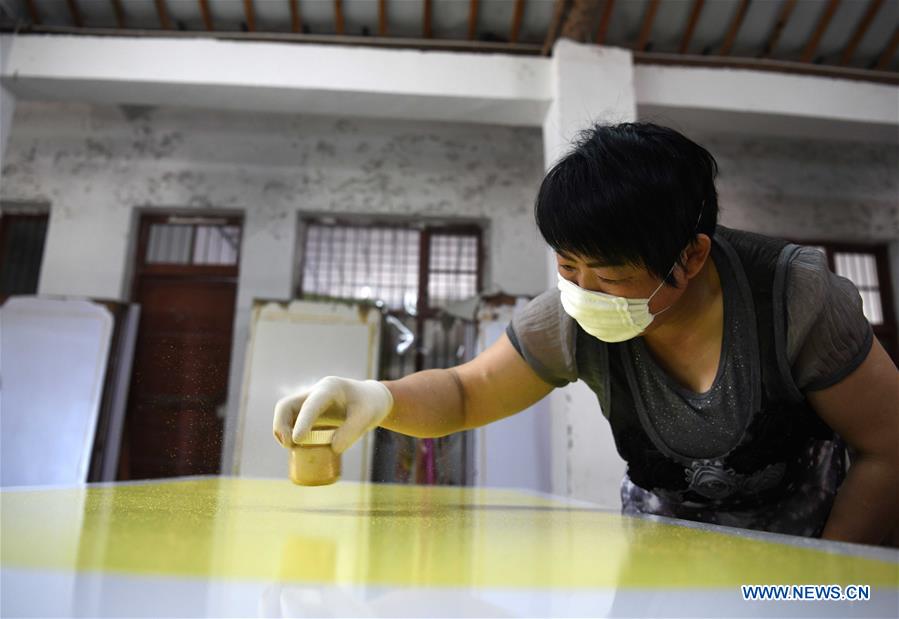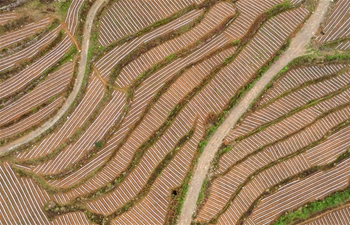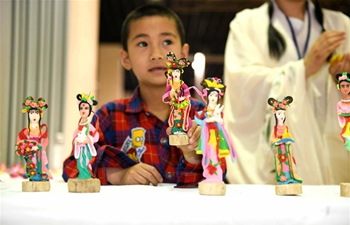A worker scatters gold powder onto a piece of Fenlajian paper at a workshop run by paper artisan Liu Jing in Huanglu Township of Chaohu, east China's Anhui Province, May 23, 2019. Fenlajian is a high-end wax mineral paper which dates back to the Tang dynasty (618-907). For centuries, access to the Fenlajian paper had remained a privilege reserved solely for China's imperial families, due to the costly materials and the set of complicated procedures involved in its making. The techniques in producing this fine writing and painting material even became lost in the late Qing dynasty (1644-1911), until Liu Jing, an Anhui-based paper artisan, managed to revive them through constant trials by the end of the 20th century. Born in a family of paper-makers, Liu now runs a paper workshop dedicated to making Fenlajian and other classical papers while promoting their know-hows. Liu's classical paper processing techniques were listed as a national intangible cultural heritage in 2008, and he himself was named as a national representative inheritor to the aforementioned techniques in 2018. (Xinhua/Liu Junxi)
National intangible cultural heritage: Fenlajian paper processing techniques
Source: Xinhua| 2019-05-25 21:20:11|Editor: Li Xia
YOU MAY LIKE
-
Farmers find new way to increase income through eco-leisure agriculture in China's Anhui
-
Chinese popular science products expo opens in Anhui
-
Morning scenery of Longchuan village in China's Anhui
-
Morning scenery of Hongcun Village scenic spot in Anhui
-
Technology week event held in Hefei, east China's Anhui
MORE PHOTOS


















